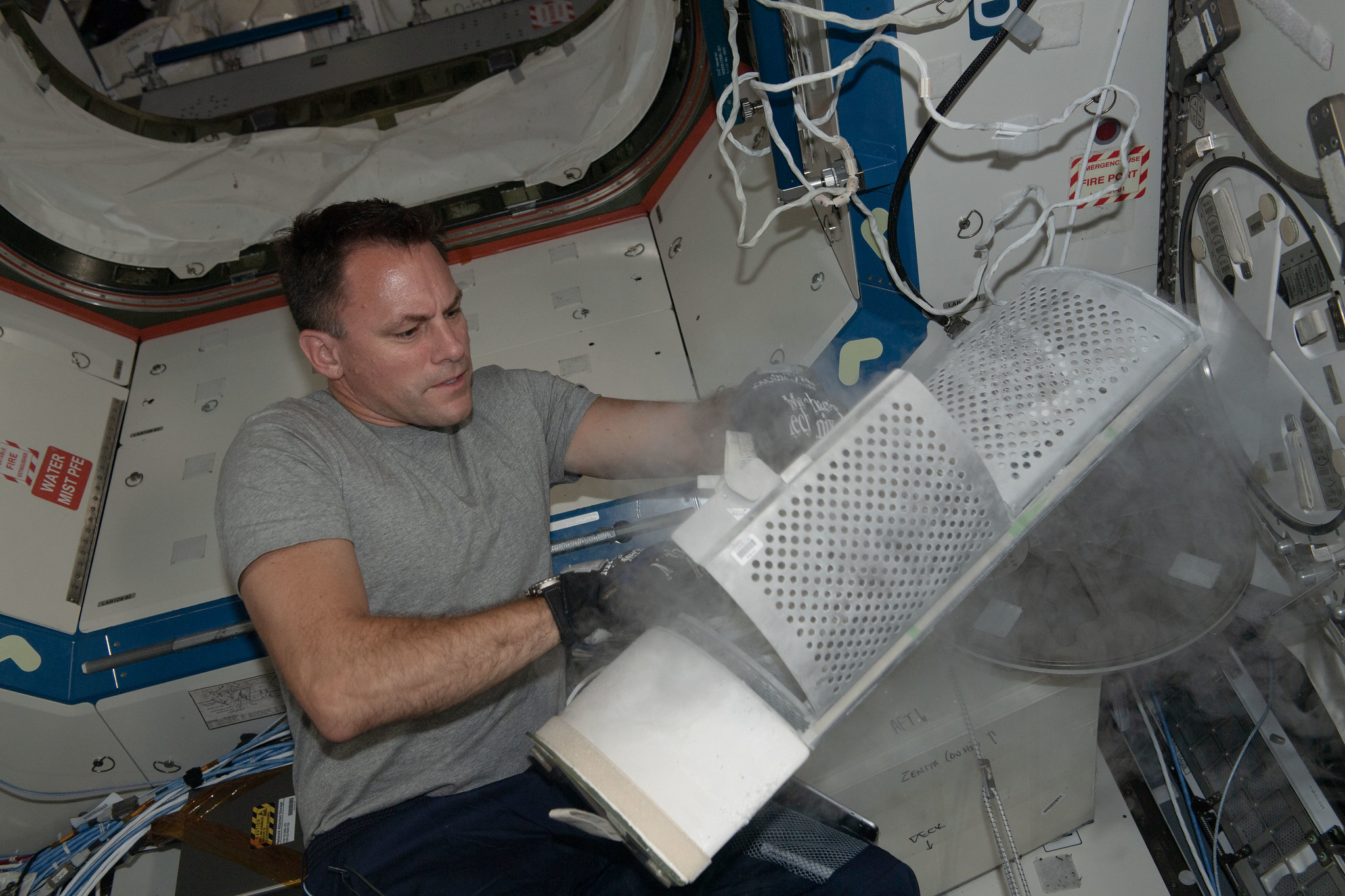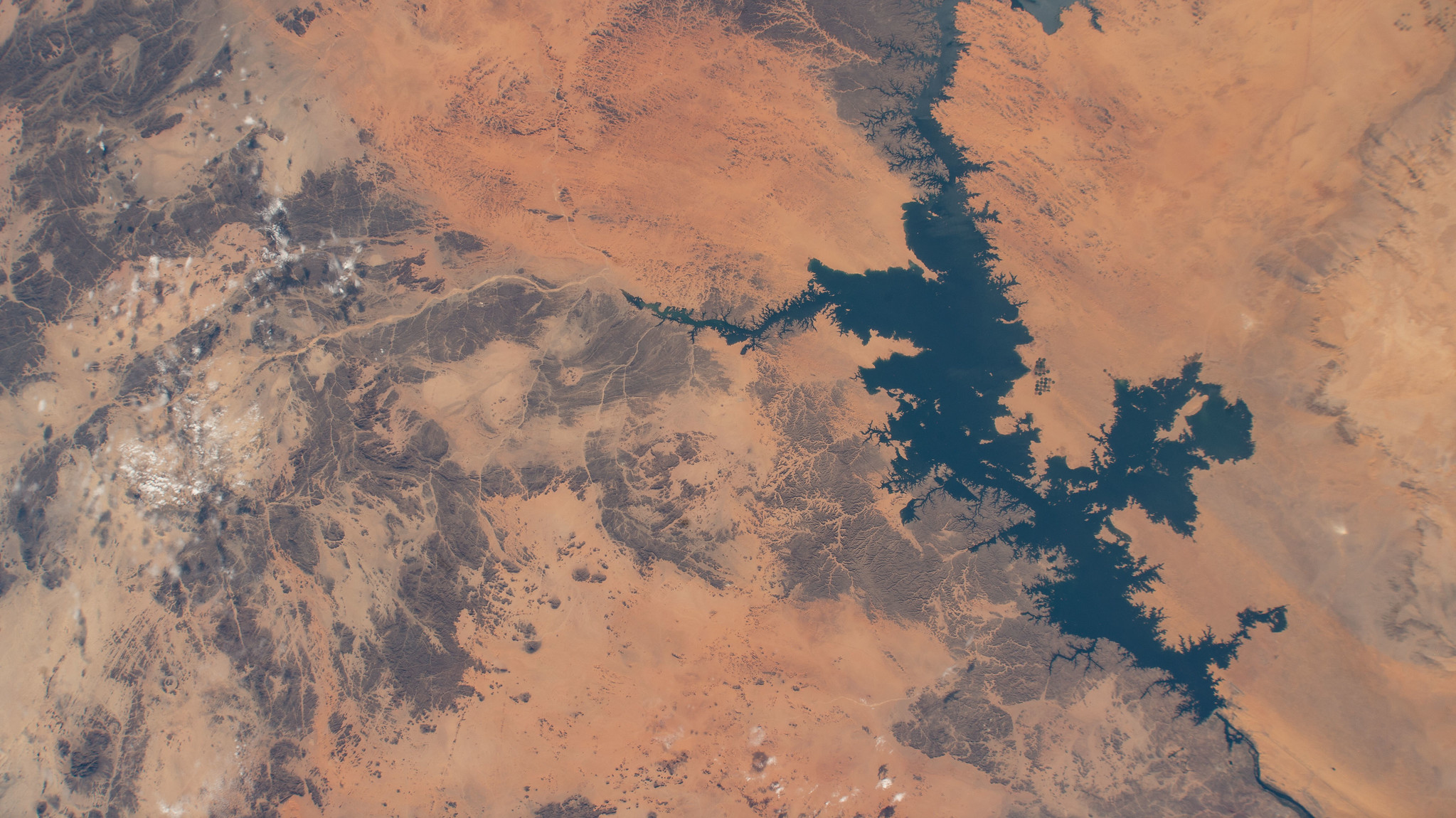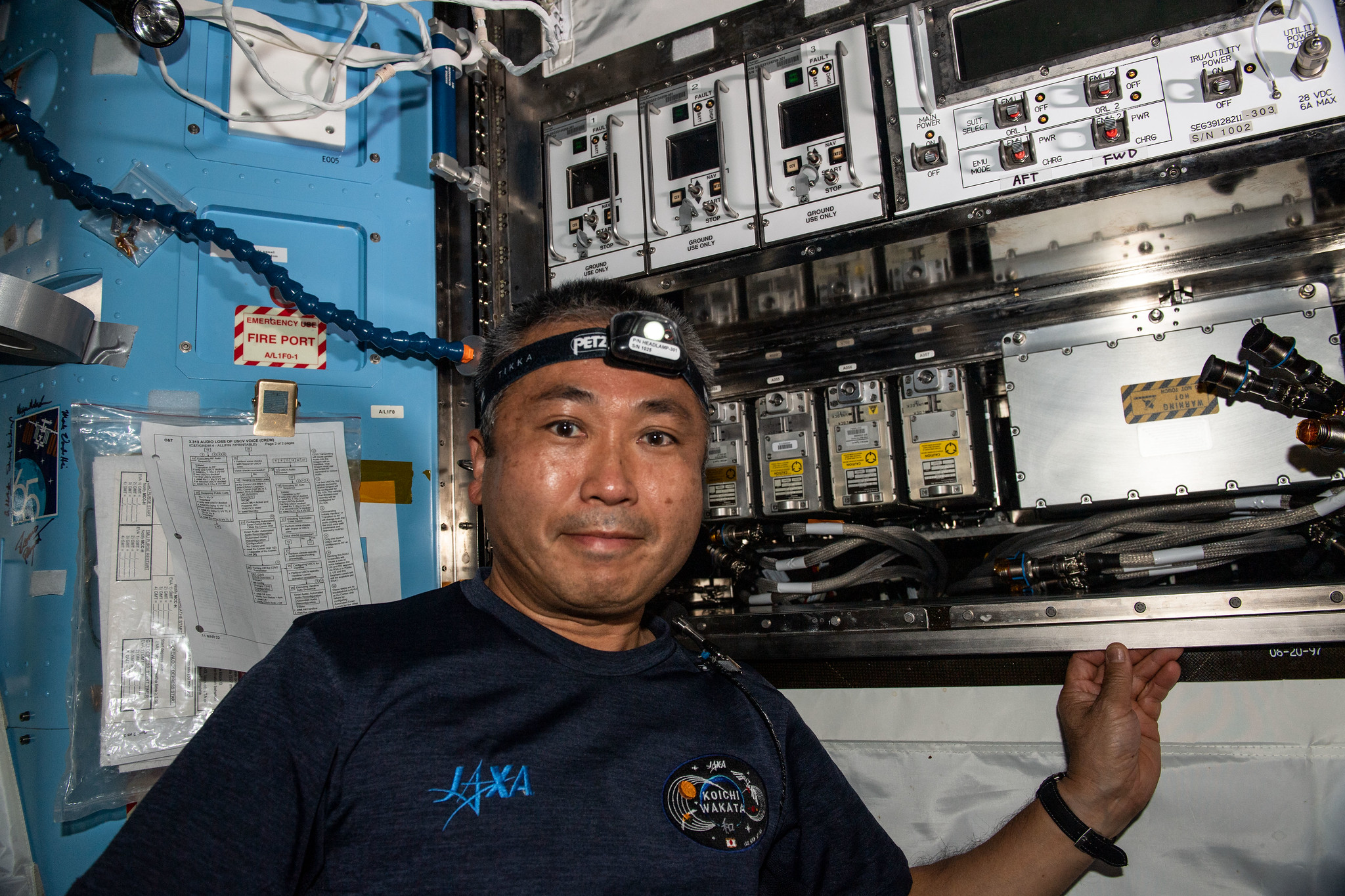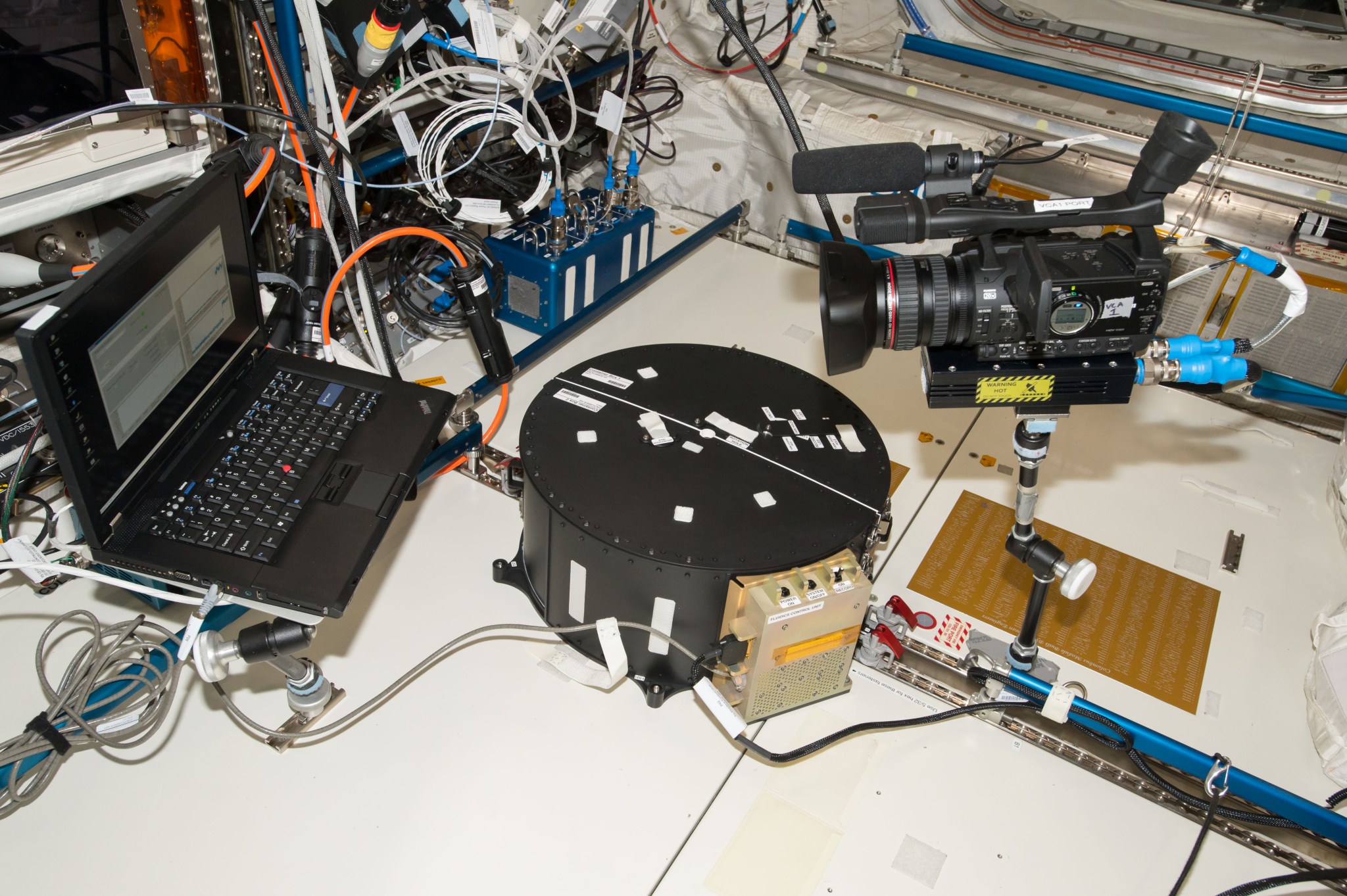

Crew members aboard the International Space Station conducted scientific investigations during the week of Oct. 24 that included studying how the body’s adaptation to spaceflight affects blood pressure regulation, testing a technology to locate and identify cargo, and evaluating fluid behavior in space.
Here are details on some of the microgravity investigations currently taking place aboard the orbiting lab:
Regulating blood pressure in space
Astronauts experience changes in their cardiovascular, respiratory, and musculoskeletal systems during spaceflight. These changes represent a challenge for future long-duration missions, particularly those that involve activities in different levels of gravity such as landing on Mars or the Moon. An investigation from the Canadian Space Agency (CSA), CARDIOBREATH, studies the combined effects of cardiovascular and respiratory adaptations on blood pressure regulation during spaceflight. Results could provide a better understanding of the mechanisms behind these changes and support development of ways to assess their effects on blood pressure during and after long-duration missions. Spaceflight-induced changes in the body parallel many associated with aging, and this research may contribute to better health care and improved quality of life for the elderly on Earth. During the week, crew members conducted respiratory measurements for the investigation.
A serious game of tag
RFID Recon uses a radio frequency identification (RFID) reader and antennas attached to a free-flying Astrobee robot to identify and locate tagged cargo on the space station. Similar to barcodes, RFID tags are electronic, do not require a line of sight, and can operate through wireless communication. Results could help crew members find items quickly and efficiently. In low-Earth orbit, relaunching lost assets is an option, but on deep space missions it is impractical or impossible. More efficient retrieval of assets also allows for more efficient packing, reducing launch mass and volume. This technology could even enable robots to prepare mission destinations in advance of human arrival. On Earth, RFID has been used primarily for supply chain logistics at the box and pallet level, but more precise item tracking and localization could help automate warehouse operations, shipping and receiving, manufacturing, health care, and other operations. Crew members installed an RFID recon reader on an Astrobee and gathered RFID data for cargo moving during the week.

Liquid behavior
FLUIDICS, an investigation from ESA (European Space Agency), evaluates sloshing, turbulence, and other behaviors of liquid in a sphere in microgravity. These observations provide a good model for what happens in a spacecraft’s fuel tank. Results could provide insight into measuring liquid volume, supporting improvements of the guidance and precision of satellites and their fuel management, which can expand lifespan. This investigation also may help provide a better understanding of Earth’s oceans, including the phenomenon of “rogue waves,” contributing to improved climate prediction systems and optimizing the use of ocean-based renewable energy. Crew members performed runs of the experiment during the week.

Other investigations involving the crew:
- Repository is a storage bank that maintains biological specimens used for scientific research on human physiological changes and adaptation to microgravity, including longitudinal studies spanning many missions. Space biomedical research often leads to medical advances that benefit people on Earth as well.
- Food Physiology characterizes the effects of an enhanced spaceflight diet on immune function, the gut microbiome, and nutritional status indicators. Diet can be easily and meaningfully altered on Earth or during flight, and documenting the effects of dietary improvements on human physiology could provide guidance for using diet to enhance adaptation to spaceflight.
- XROOTS uses the Veggie facility to test hydroponic (liquid-based) and aeroponic (air-based) techniques to grow plants without soil or other traditional growth media. These techniques could enable production of crops on a larger scale for future space exploration and enhance cultivation of plants in terrestrial settings such as greenhouses.
- PK-4, a collaboration between ESA and State Space Corporation ROSCOSMOS, studies complex plasmas, low-temperature mixtures of ionized gas, neutral gas, and micron-sized particles. Understanding how plasma crystals form in microgravity could shed light on plasma phenomena in space and lead to new research methods and improved spacecraft designs and improvements in industries that use plasmas on Earth.
- Standard Measures collects a set of core measurements, including data on behavioral health and performance, cellular profiles and immunology, the microbiome, biochemistry markers, sensorimotor changes, and cardiovascular health. These data help researchers characterize adaptive responses to living and working in space and monitor the effectiveness of countermeasures.
- ISS Ham Radio sessions engage students, teachers, parents, and other members of the community in direct communication with astronauts via ground-based amateur radio units. This experience helps inspire interest in science, technology, engineering, and math.
John Love, ISS Research Planning Integration Scientist
Expedition 68





























